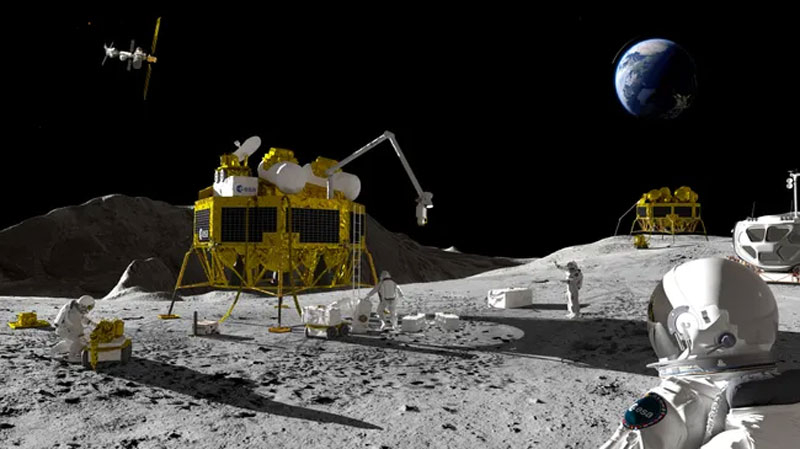Europe will provide the Moon and Mars with mobile communications and navigation


The other day in Milan, the pan-European Moonlight program officially launched, the goal of which is to organize a mobile communications and navigation network on the Moon, and later on Mars. “We don’t even realize what we signed up for,” is how one of the program participants described the initiative. But the eyes are afraid, but the hands do. The first satellite of the project will be launched in 2026, and the provision of services will begin in 2028.


An artistic representation of work on the Moon. Image source: ESA
The official initiator of the Moonlight program is the European Space Agency (ESA). The program provides for the creation of a constellation of five relay satellites in lunar orbit. The satellites will be launched to deploy Lunar Communications and Navigation Services (LCNS). Services will be provided to public and private companies. Over the next 20 years, at least 400 lunar missions are expected to launch, each of which will require communications with stations in lunar orbit and the Earth. Missions to the lunar surface will need navigation to achieve targeted landings and movement on the Moon.
«ESA is taking a decisive step in supporting the future commercial lunar market, as well as current and future lunar missions,” said Josef Aschbacher, ESA Director General, at the Moonlight Agreement signing ceremony in Milan. Many companies and government agencies will not have to think about communications, saving resources on equipment and implementing their unique tasks.
The first step will be the launch of the experimental Lunar Pathfinder relay satellite. The device will be manufactured by Surrey Satellite Technology Ltd (SSTL). Launch is expected in 2026. The first services of the Moonlight network are planned to begin to be provided by the end of 2028, and the system should be fully operational by 2030.
In addition to ESA, NASA, JAXA and many companies from around the world are involved in the Moonlight program. However, Europe hopes to keep the biggest piece of the pie for itself. There could be exceptional commercial benefits for European companies and the European Union. If successful, based on the lunar communications and navigation network, ESA hopes to create a similar network on Mars. On this score, the agency has already come up with a name for the Martian infrastructure – MARCONI, but that will be another story.
Recent Posts
A demo of Dispatch, a comedy game about a superhero agency from the former developers of Tales from the Borderlands and The Wolf Among Us, has been released on Steam
Developers from the American AdHoc Studio, founded by former Telltale Games, Ubisoft and Night School…
Digma DP-FHD800A LCD Full HD Projector Review: A Modern Approach
When you think about a home theater, you immediately imagine bulky projectors with a bunch…
Lian Li Introduces HydroShift II LCD-C Liquid Cooling System with 360mm Radiator and Three Configurations
Lian Li has introduced a series of maintenance-free liquid cooling systems HydroShift II LCD-C. It…
Apple: App Store App Developers to Earn $406 Billion in 2024
Amid mounting pressure from U.S. regulators, Apple has released the results of an independent study…
ASRock Admits Its Motherboards Break Ryzen 9000 Processors
Following a report from YouTube channel Tech Yes City that ASRock linked Ryzen 9000 processor…
Apple to Change OS Numbering: iOS 26 to Come This Year Instead of iOS 19
Apple is preparing a large-scale rebranding of its line of operating systems. This was reported…